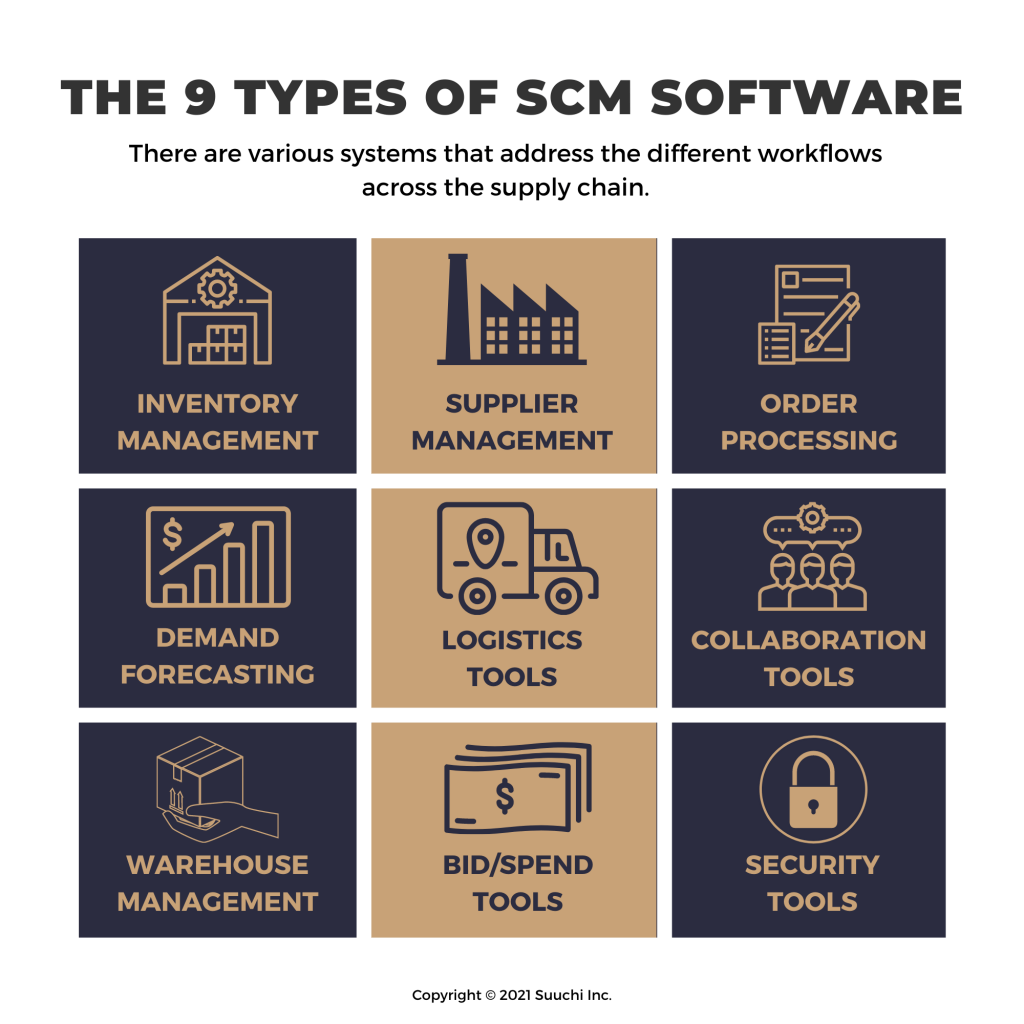As the world of manufacturing and retail continues to evolve, more businesses are looking at their internal processes for increased revenue. Shaving the margin of error down in a supply chain can yield enormous financial benefits, and, thanks to supply chain management software, it has never been easier to reap those rewards.
Supply chain management (SCM) tools allow businesses to significantly reduce errors (and the unnecessary expense resulting from those errors) while enabling full optimization of the whole supply chain. However, there are several different types of supply chain management software.
Different Types of Supply Chain Management Software
1 | Lean Inventory Tools
The idea behind lean production is relatively simple. A company only creates what items they need at that time. These needs are determined by projections of what customer demand will be like, and the more accurate those projections, the more efficient a business can run. For a lean inventory system to be truly effective, it would require the ability to integrate with sales systems to marry sell-through data with available inventory.
2 | Supplier Management
Supplier management tools allow a business to quickly analyze the relationship with a particular supplier and how they have affected your supply chain. Supplier compliance can cost businesses up to $5 million if the processes remain manual and disconnected across the operations team. A vendor management software creates a digital profile for each supplier for companies to rate and manage all tiers of partners on key metrics.
3 | Order Processing Tools
Order processing tools allow businesses to capture data for immediate use. With tools like this, much of the time-consuming manual work associated with order processing can be done automatically. These systems reduce the time and manpower required to process purchase orders (PO) and invoices. An intuitive order processing tool also allows for supply chain finance teams to quickly run reports on issued POs, outstanding invoices, and have a better understanding of the operations workflow when reporting out to key stakeholders.
4 | Demand Forecasting
One of the most useful applications for all of the data and inventory management systems to capture is to forecast future demand. These projections enable a business to be proactive, rather than reactive, and not miss out on potential sales due to being underprepared. Demand forecasting tools help reduce overhead costs and improve margins overall. The power of a demand forecasting tool increases when integrated with a vendor management system to ensure that any product forecast data is married with the data on the vendors that will provide the best turnaround times, price, and quality.
5 | Logistics Tools
The constant communication and various tracking tools available in supply management software help to prevent delays and other logistical issues by catching issues quickly, drastically reducing the chance of inefficient communication channels slowing things down. Over the past few years, there have been heavy investments in logistics software to improve the outbound supply chain. These logistics tools also help to support sustainability initiatives to track a company’s carbon footprint in the transportation process.
6 | Collaboration Tools
Supply Chain Collaboration tools allow different parties along the supply chain to communicate with each other efficiently and effectively. Having such a comprehensive portal for collaboration makes doing business more efficient, but it also reduces the chances of miscommunications. It is important to find a communication and collaboration platform designed for the supply chain that gives every participant a seat at the table to provide updates, have visibility, and ensure data integrity.
7 | Warehouse Management
Though not all supply chain management systems are the same, some systems provide planning tools that deal with the logistics of warehousing items, such as receiving products, tracking their location, and managing multiple locations.
8 | Bid and Spend Tools
These tools allow a business to dig down into how they are spending. It also provides a great deal of automation in the procurement process, which has the benefit of removing human error from the equation. Tools like this also make it much easier to evaluate competing bids and reduce the chances of missing an opportunity to improve the efficiency of your supply chain further.
9 | Security
Data breaches are big business, which is why some aspects of SCM software are tools for preventing that very thing. In addition to a company’s security, it can also help with partners to be able to demonstrate a certain level of data security.

Does SCM software need to be so spread out?
These nine types of supply chain management software are by no means comprehensive, but they do serve to illustrate the versatility of supply chain management solutions. It’s typically not just one application serving a specific purpose, but many software options out there don’t include all tools in one.
That’s where the GRID is making a difference. We combine all necessary elements of SCM software into one ultimate collaboration app for enterprises to connect every part of their supply chain.
LEARN MORE: Learn more about the Suuchi GRID approach to next-gen supply chain management.
